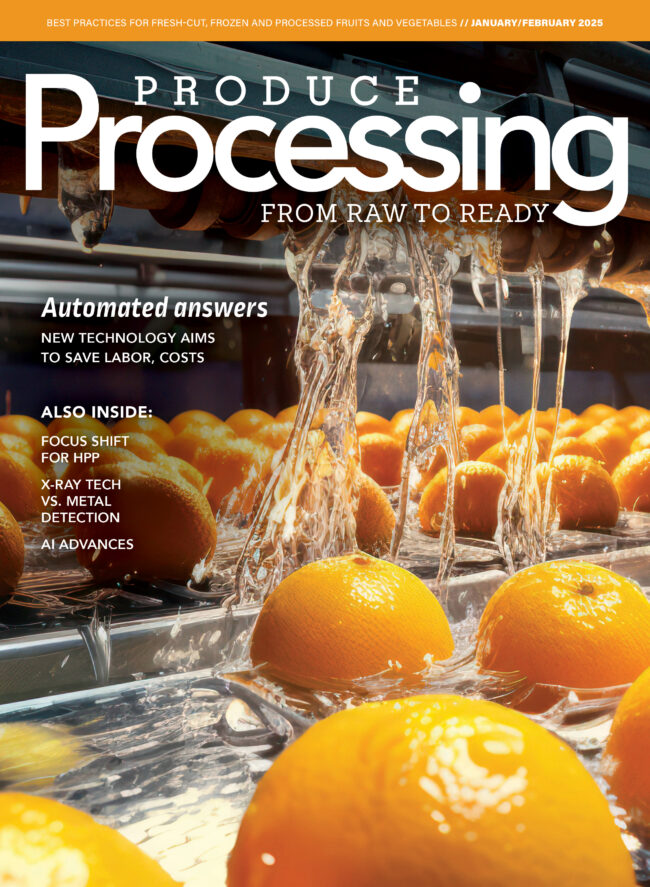Produce-based snack foods on the rise
Snacking on the go and replacing meals with snacks is a growing trend among young consumers who have health-conscious eyes on functionality with their food choices.
According to statistics from the market research company IRI, the macro-snacking category is expected to grow by $16 billion in the next five years. Within that category, fruit-, vegetable- and legume-based snacks are among the fastest risers, said David Walsh, SNAC International VP of membership and communications, during Pack Expo Connects.
SNAC International is an international trade association for the snack industry with more than 400 member companies worldwide.
Walsh said health-conscious consumers, busy lifestyles and non-traditional flavors are driving trends in snack growth, which hasn’t slowed down during the COVID-19 pandemic. Since the start of COVID, only personal healthcare has grown more in the retail sector than snack foods.
Consumers want snacks not just to satisfy hunger, but which help them stay fit and healthy, which Walsh classified as being “functional.” Eighty-eight percent of consumers are willing to pay higher costs for foods they perceive as healthy. High fiber content, protein, antioxidants, vitamins, minerals, whole grains and probiotics that aid brain, heart, skin and gut health are among the traits they look for, Walsh said.
Produce processed into shelf-stable form fits the bill. Sales of apple chips have increased by 24% over the past year, while overall sales of fruit chips — banana, coconuts, pears, pineapple and plantains among them — have increased 7.1%.
“Fruit chips are among the highest-growing categories of snacks,” Walsh said. “Many of these snacks are often baked, with a lot of flavor combinations. Bright packaging is a driver, too.”
Savory, vegetable-based snacks continue to thrive with 9% growth over the past year to $4.2 billion. Veggie snack producers, such as Off The Eaten Path, have taken to combining vegetables, whether snap peas, beets or sweet potatoes, with nuts and legumes, such as black beans and chickpeas. Use of chickpeas in snack foods is up 35%, while the use of beans is up 25%.
“This has been probably the most innovative category in terms of snacks,” Walsh said of savory snacks. “It’s been a great category for vegetables.”
Cauliflower and onions were two more vegetables Walsh cited as sources for innovative new products. Peppers have been utilized greatly in new snacks, as consumers continue to want bold new flavor combinations, with spicy being front and center. Also, exotic flavors are on the rise, said Walsh, who used blood orange as an example.
“Globalization in flavors is important,” Walsh said. “(During COVID), consumers may seek snacks to fill the desires they would normally get at restaurants.”
The original snack chip — the potato chip — was already the largest potato category in retail prior to COVID, but has only increased in sales. Potato chip sales in the U.S. were up 10.1%, year-over-year, from July through September, according to IRI data.
Packaging
IRI reports 92% of millennials and Gen Z members replace at least one meal per week with snacks, while 7% don’t eat traditional meals anymore. This trend has resulted in a want for larger package sizes, as well as multipacks and more variety packs. Just because there has been more working from home and less on the go, this trend isn’t reversing.
While 4.5- to 8-ounce package sizes is still the largest seller, like it was pre-COVID, the 10- to 16-ounce category has seen the biggest increase. IRI studied snack size sales from three separate weeks, one apiece in March, April and May, and reported 10- to 16-ounce snack packages were up 57% to 87%, year-over-year.
“Snacking on the go is turning into snacking at home,” Walsh said.
Packaging can help drive snack purchases. Walsh highlighted some questions snack producers should ask themselves.
“Is the packaging elevating the product?” he said. “Is it fun and engaging? Plus, the younger generation is looking for sustainability in their packaging.”
Some on-package claims that resonate with consumers include: high protein, organic, vegan, natural, certified gluten-free, hahal, kosher, paleo-friendly, low carb, high fiber and low fat. Highlighting green manufacturing processes also is a positive with consumers.
While snacks perceived as healthy is a major driving focus in the category, Walsh stressed that taste is still the No. 1 factor in determining snack purchases.
“Taste still reigns supreme,” he said.










